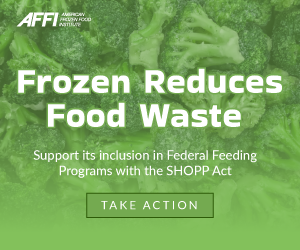By: Jack Li, President and Haiku Master, Datassential

With a series of COVID-19 vaccines on the horizon, food and drink businesses have two big questions. First, how has the pandemic changed consumers and the marketplace? Second, what’s next in health, foods and flavors? COVID-19 and the resulting focus on safety accelerated many societal shifts that were imminent. More Americans signed up for grocery shopping and delivery services, trusting a stranger to work through their grocery list – even for meat and produce. Restaurant delivery and take-out have been embraced more than ever. Contactless, cashless payments are now the norm. The challenge of widescale consumer trial has been overcome so, while the motivations for these services may evolve from safety to convenience, the services are likely here to stay.
Shelter in place orders and restaurant service limits (no dine-in or limited capacity) have made operating tremendously difficult for foodservice. As of December 4, 2020, 7.6% of restaurants are permanently closed due to the current financial environment. Another 2.1% are temporarily closed. With any luck, restaurants can be fully operational in 2021 but the landscape will be at least slightly different.
The cuisine types with higher rates of permanent closures (as of December 4th, 2020) seem to fall into two camps. The first are those that rely on office working/commuting, such as sandwich shops/delis and dessert/snack places. The second are restaurant types for which the dine-in experience is very hard to replicate at home with delivery or take-out. This could be because the food does not travel well and/or because the ambiance and service are significant to the meal experience. French restaurants and Steakhouses are examples. Other restaurant types suffering more than average with permanent closures include Mediterranean, Other European and Mixed Ethnicity restaurants.
Recent research suggests many consumers will miss closed restaurants, places that provided food variety and novelty in their communities. Indeed, the pandemic has not stopped consumers’ cravings and/or food trends. In a Datassential September 2020 survey, nearly a quarter of American consumers said they were more likely to try a new menu item during the pandemic and 55% said they were just as likely as ever to do so. Furthermore, for plant-based meats, smoothie bowls and avocado toast, more than 8 in 10 consumers who liked these trends pre-pandemic are still interested.
As always, Datassential is tracking food trends including health (functional foods, personalization), the role of personal values (e.g., climate change as a driver of food choice) and global inspirations. Regarding the latter, watch for more mainstreaming of Middle Eastern cuisine and emerging foods/flavors with African origins.
I hope you’ll join me during my upcoming talk at AFFI-CON 2021 on Monday, February 22, at 1 p.m. (EST) to hear more insights from Datassential’s as we dive deeper into our food trends to uncover what’s next for frozen in foodservice. To learn more and to register, click here.




